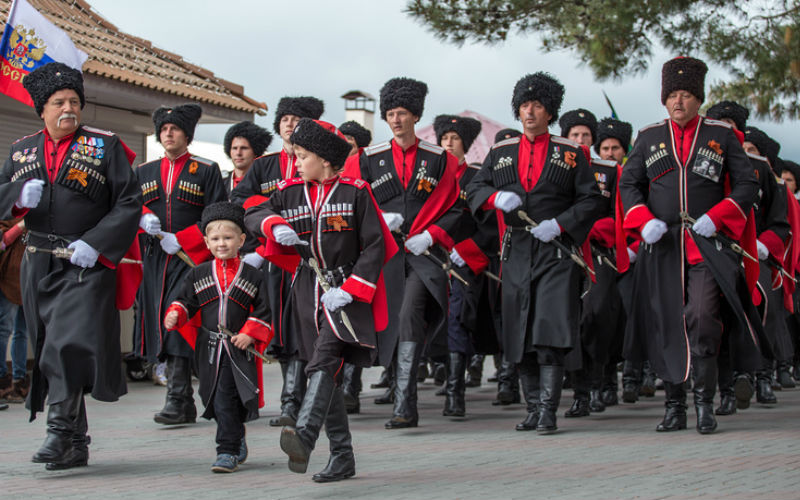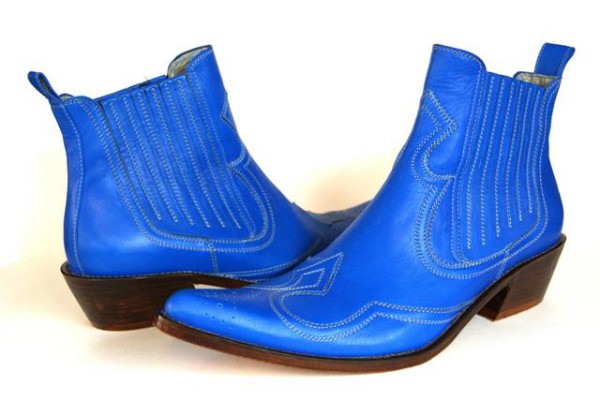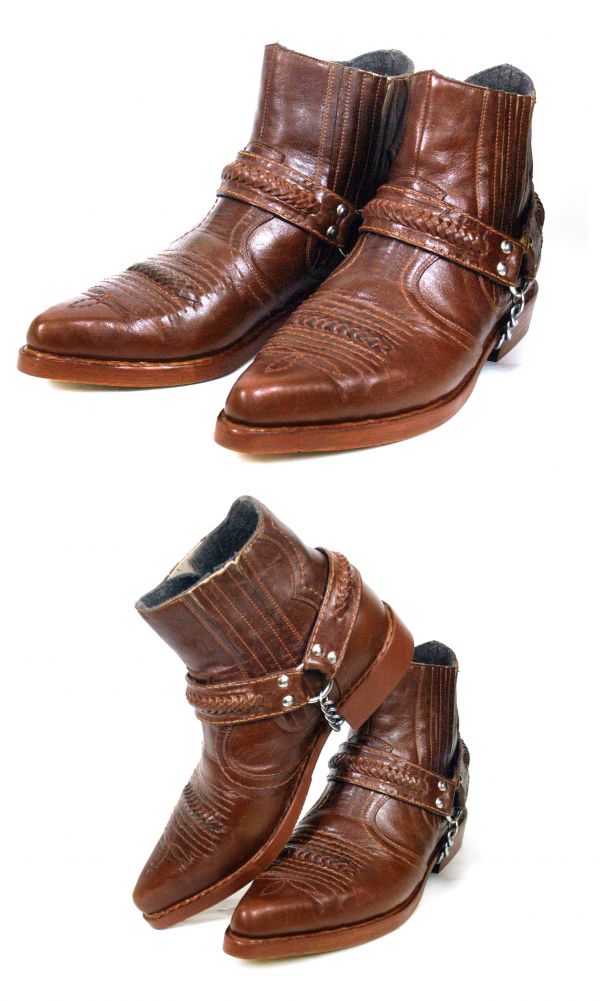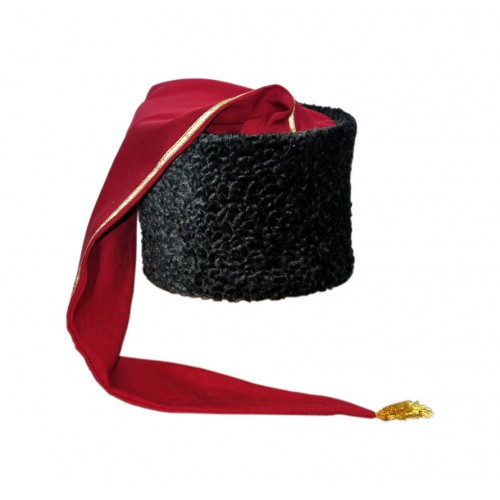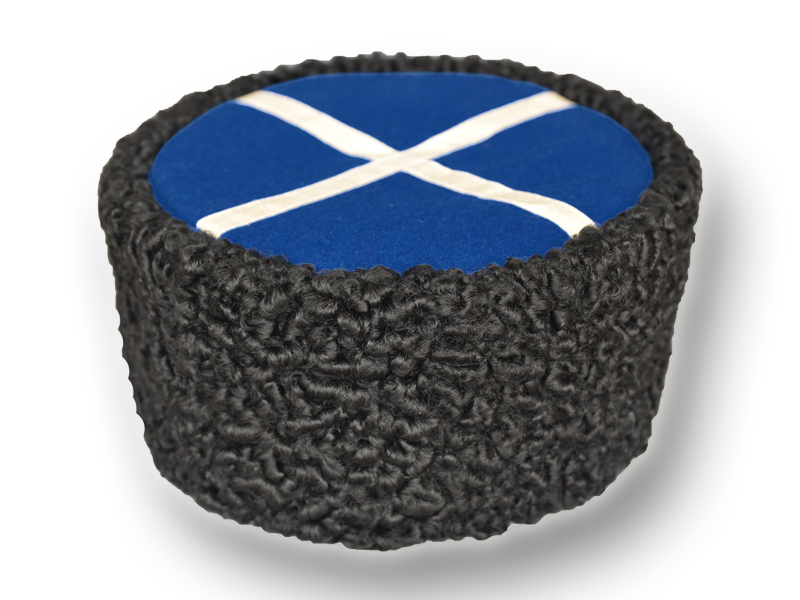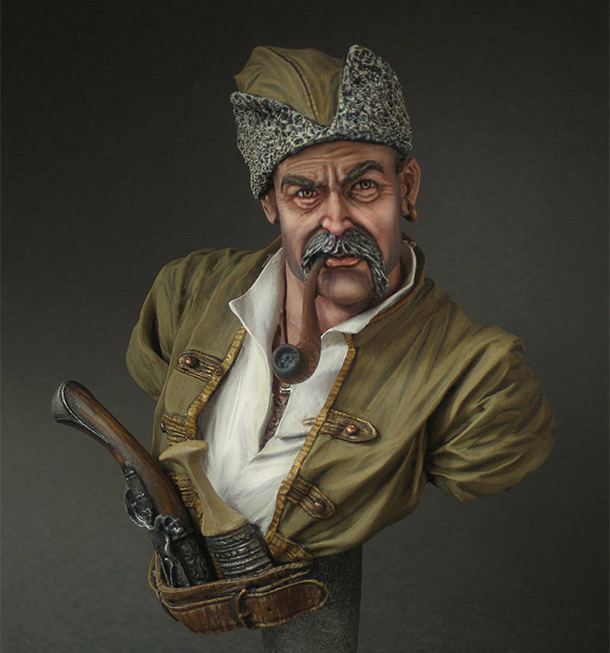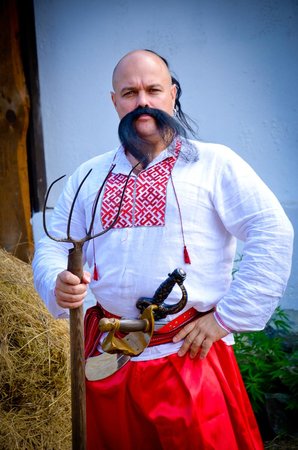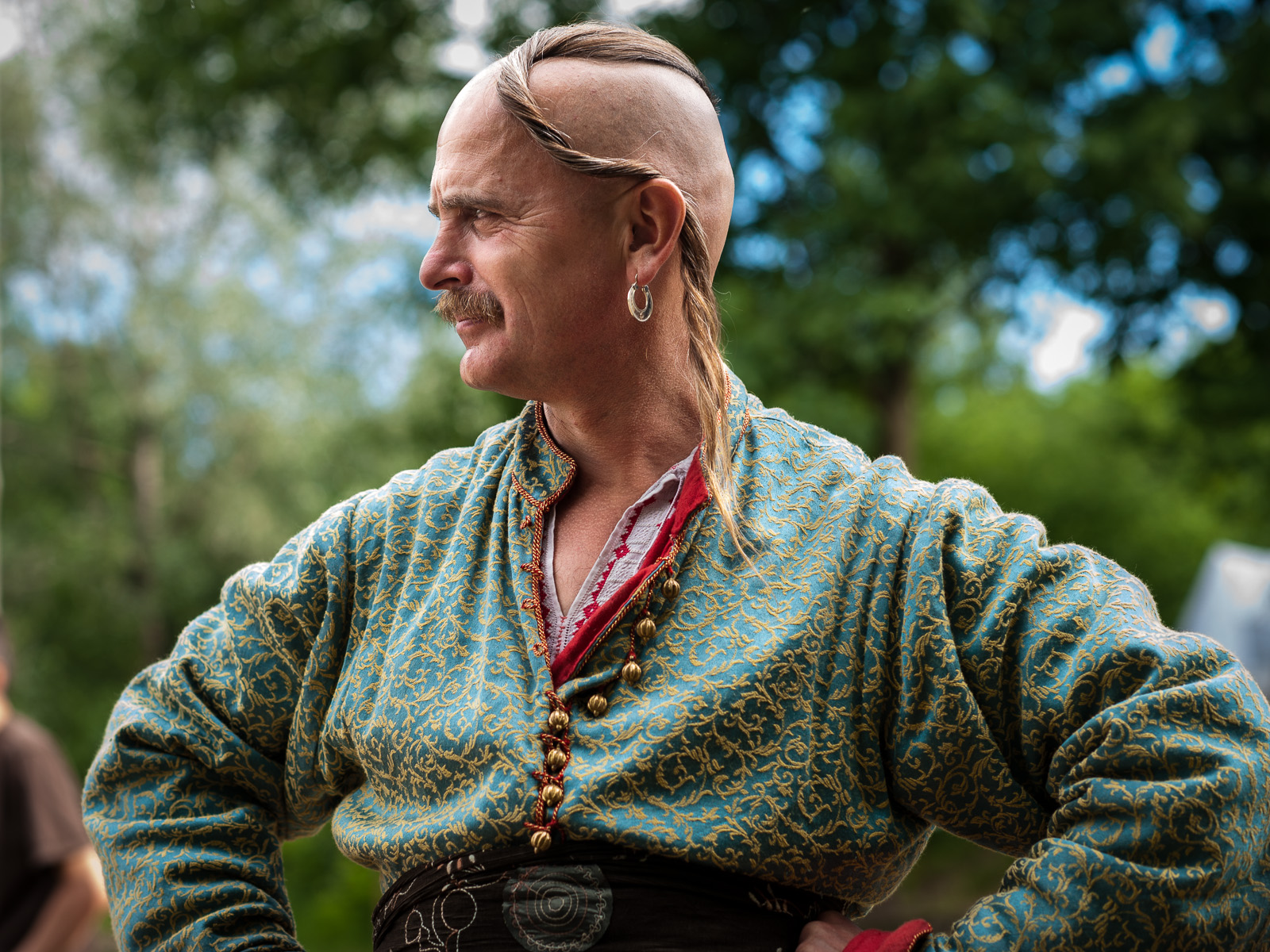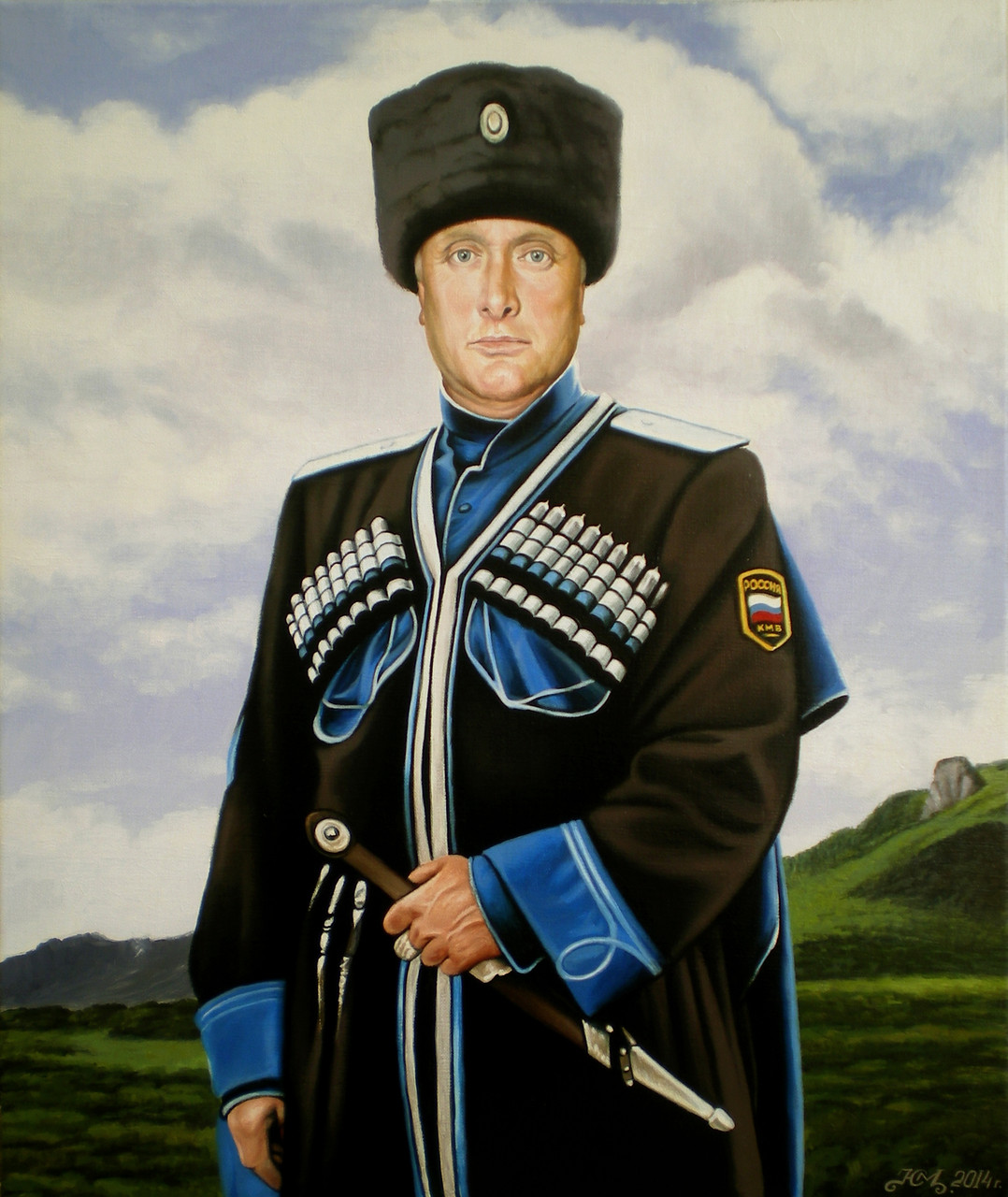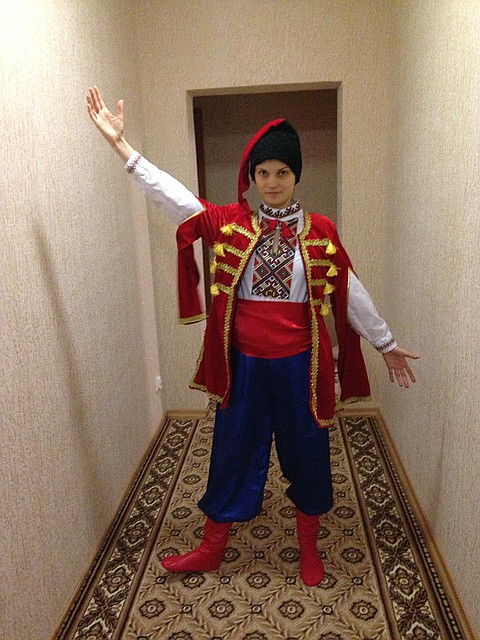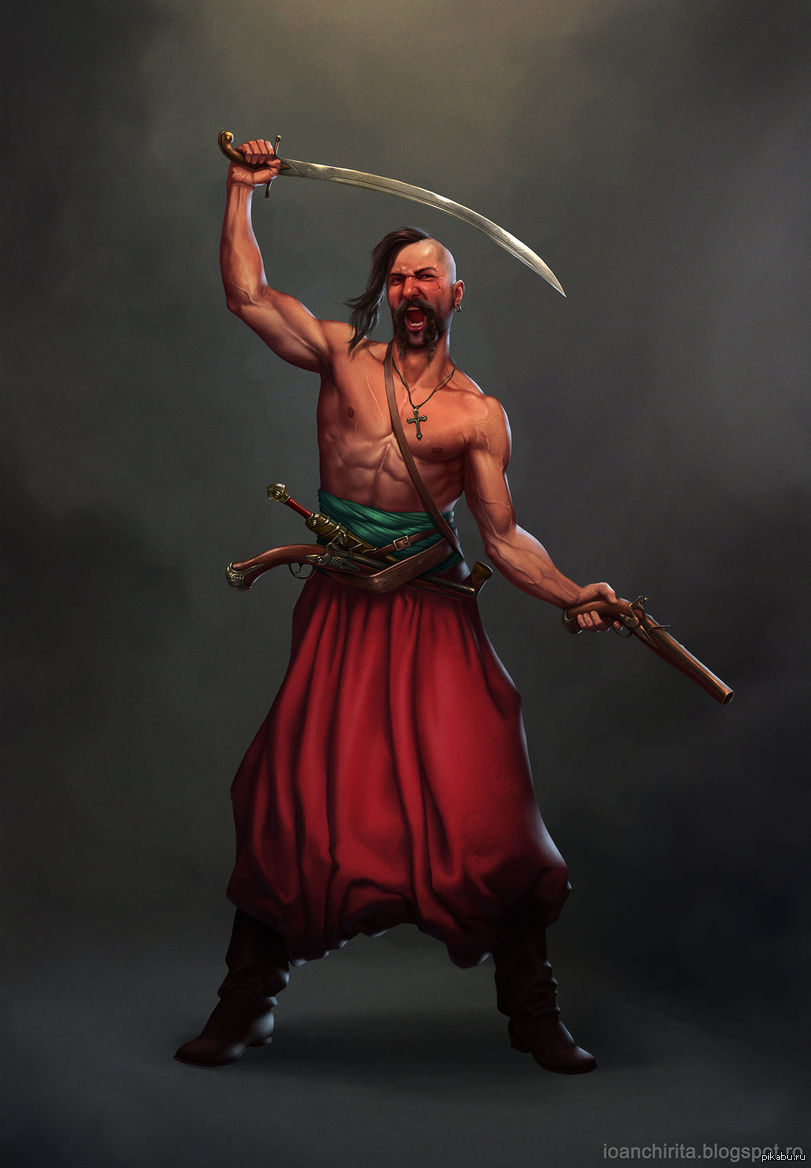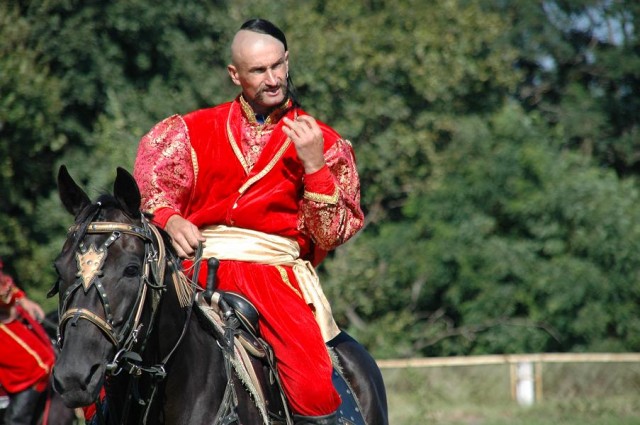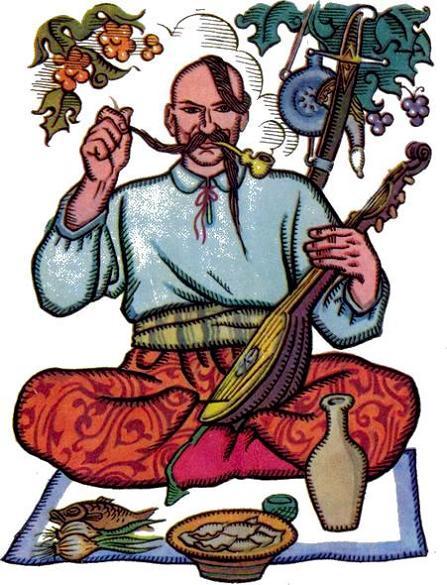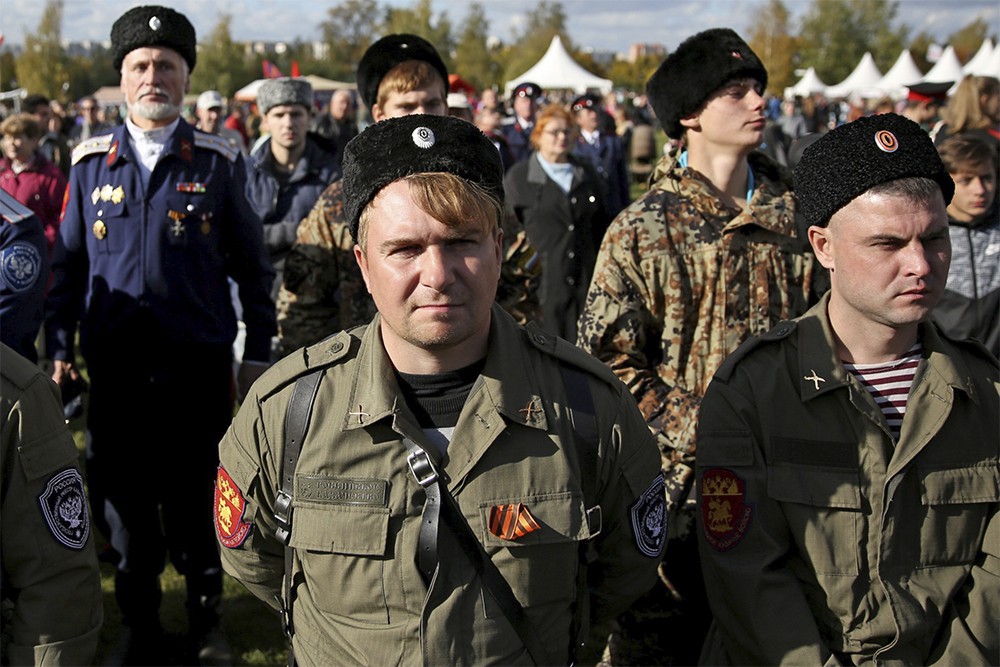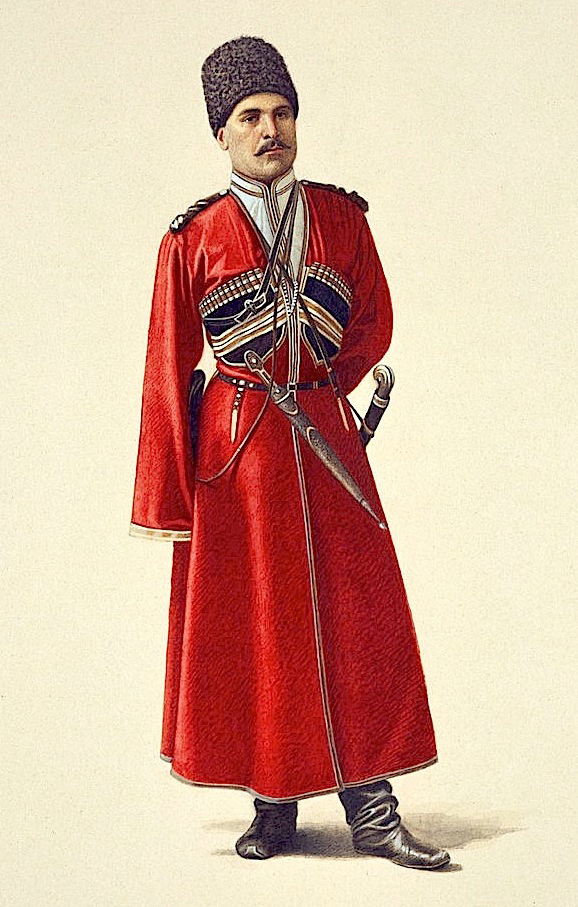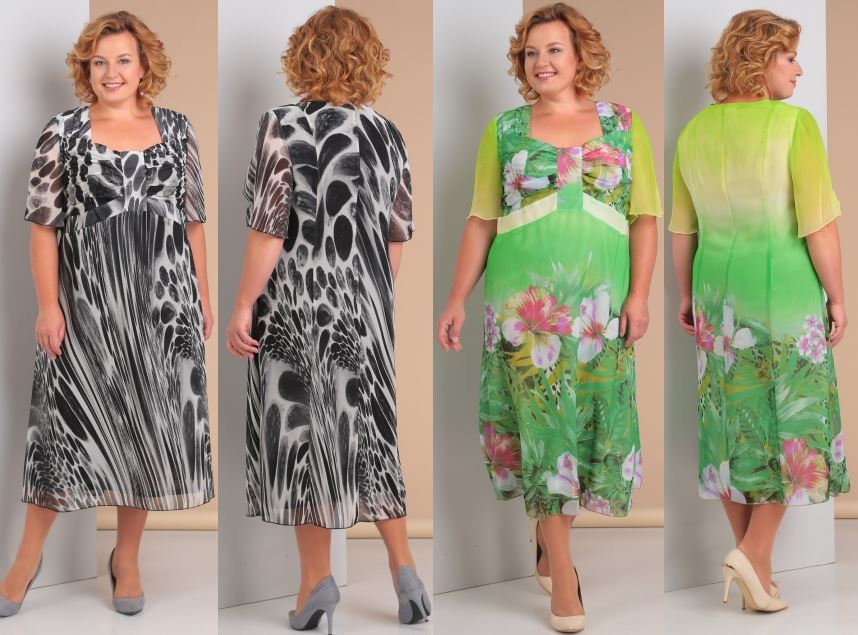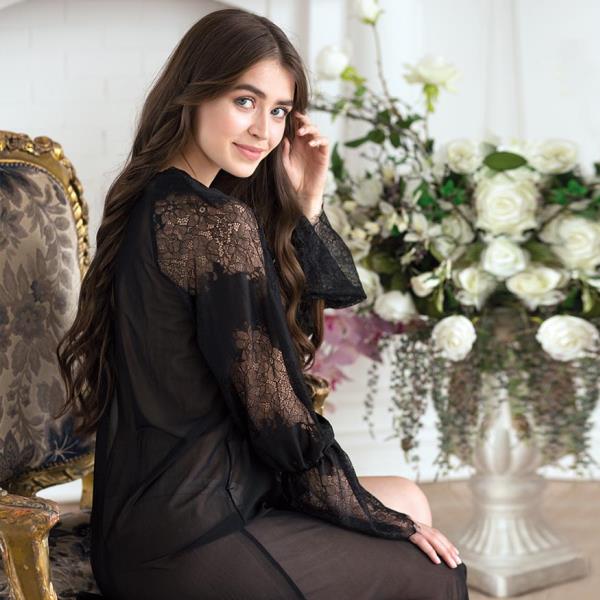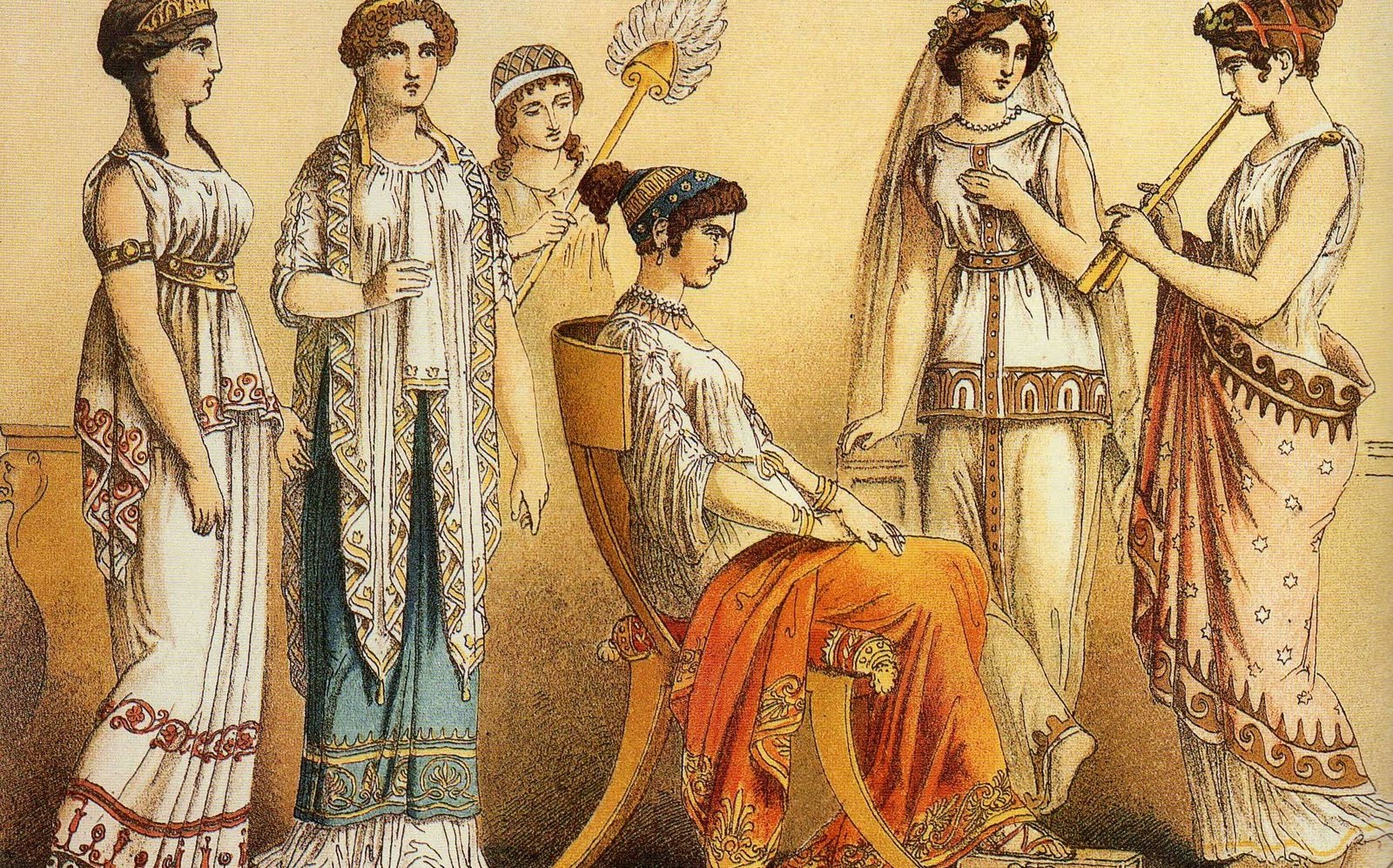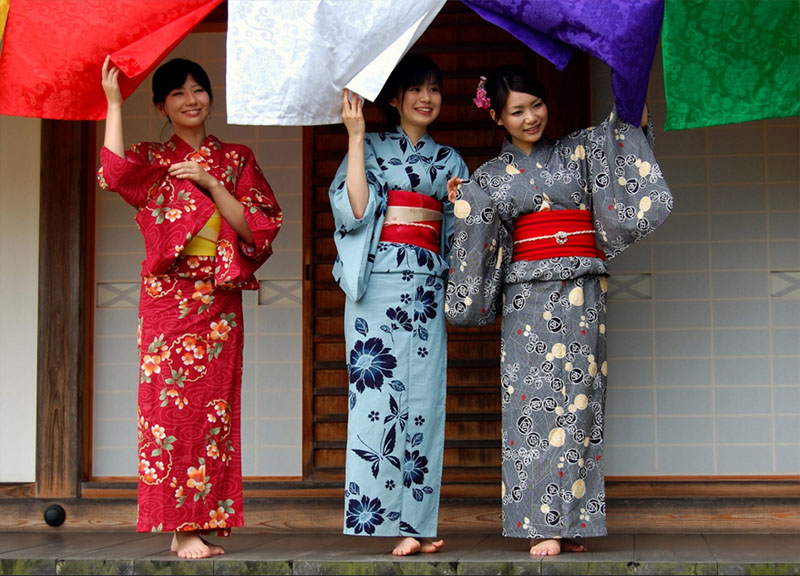One can always recognize a nation by its national costume. The clothing of the Cossacks, like that of any nation, has come a long way in development, and is largely connected with history, traditions, and local tastes. In the 16th and 17th centuries, the Cossack costume was formed under the influence of several cultures; they did not have their own costume for a long time. Their attire consisted of elements of Russian, Tatar, Turkish, and Circassian clothing, sometimes very strange in the combination of things and colors. The clothing of the Cossacks was a reflection of their originality and culture; they treated it with respect, like a second skin. Therefore, it was forbidden to wear someone else's clothing, including that of a dead person, without a special purification ceremony. But by our time, women's clothing has changed under the influence of European fashion. Men's clothing has been replaced by a mandatory military suit, which the Cossacks had to buy with their own money and wore at home after completing their service.
Varieties
At the beginning of the 16th century, a special social class was formed – the Cossacks. With each century, clothing changed, and its own characteristics appeared:
- 16th century – shirt, trousers, caftan, hat, boots. Cossacks loved to show off their best side, so they wore velvet caftans, belted with expensive Turkish and Persian sashes and shawls. Cossacks amused themselves by showing off clothes from their wardrobe;
- The equipment of the Cossacks of the 17th and 18th centuries - zipun, caftan, shirt, trousers, trukhmyanka (men's clothing). Women wore: from underwear - a shirt, trousers, kubelok, from outerwear - a sheepskin coat;
- 19th century – shirt, loose trousers, light shoes, knitted house socks, sheepskin coat, cap. Women wore blouses, wide linen skirts;
- 20th century – protective cap, tunic, uniform, greatcoat (clothing for men). For women, a spacious matinee jacket with a front fastening came into fashion. Girls wore a fitted jacket with a bodice down to the hips;
- 21st century – Cossack clothing has been ousted from everyday life, but rare examples can still be found. They are sent to museums as exhibits.
Some troops were distinguished from others by a certain color of uniform. The uniforms, shoulder straps, and caps of the Cossacks living on the Don were blue with red stripes and a rim. The costume of the Cossacks from Kuban consisted of a Circassian coat and black trousers, purple stripes were sewn onto the trousers, and a papakha was worn on the head. The basis of the attire of the Terek Cossacks was a black uniform with blue shoulder straps, a cap also black with a blue rim. The Cossacks from Astrakhan had blue uniforms with yellow shoulder straps, yellow stripes on the trousers, and a blue cap with a yellow rim. The costume of the Ural Cossacks included blue uniforms with purple shoulder straps, a blue cap with a purple rim, and purple stripes on the trousers. The Yaik Cossack wore a green uniform (a type of chekmen) with light blue shoulder straps, grey trousers with light blue stripes on the sides. A green cap with a light blue rim adorned his head. Cossacks from Siberia wore green uniforms and a green cap with a red rim, and red stripes were sewn onto the trousers.
The uniform of the Cossacks living on the banks of the Amur and in the Transbaikal Territory consisted of a green uniform, trousers with yellow stripes on the sides, and a green cap with a yellow rim. The Volga Cossacks wore blue uniforms, trousers with red stripes, and a blue cap with a red rim. The Yenisei Cossacks' attire was based on a green uniform, with red stripes sewn onto the trousers, and a green cap with a red rim. The Ussuri Cossacks' costume consisted of a green uniform with yellow shoulder straps, trousers with yellow stripes. The head was adorned with a green cap with a yellow rim.
Types of clothing:
- Ceremonial - worn at parades, parade inspections, military oath ceremonies, in churches, at burials and wreath-laying at monuments and graves. For some, a thin cloth robe was considered formal wear. They wore lambskin hats on their heads, a down or wool scarf on their necks, and boots on their feet. A mandatory part of the festive attire was the kazakin, which was a short caftan with a stand-up collar;
- The field uniform of the Cossacks is a green tunic, trousers with stripes on the sides, a field cap. It was worn during training, sports competitions, and during cleaning of temple and cemetery grounds;
- Everyday clothing - trousers without stripes, white linen shirt, trousers, military cap. Worn in command areas;
- Mourning - women were buried in wedding dresses or special skirts and blouses. When Cossacks were buried, they were dressed in beshmets, and the cherkeska was given to a loved one.
Clothing for warm and cold seasons also differed. Summer Cossack uniform included a green cap, jacket and pants made of camouflage fabric, boots, and a belt for weapons. Winter clothing included a papakha, a camouflage insulated jacket, insulated camouflage pants, boots, and a belt for weapons.
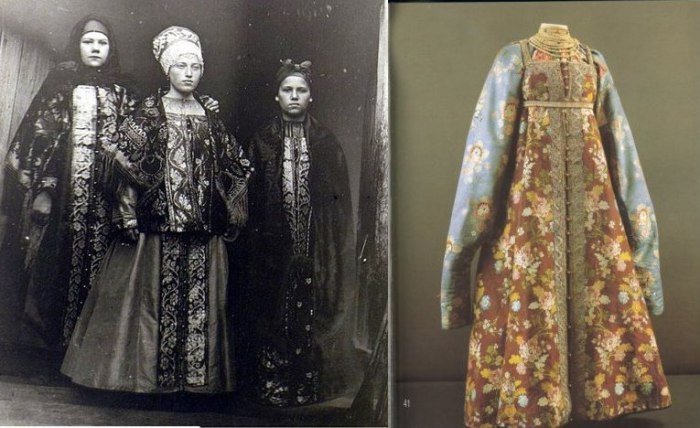


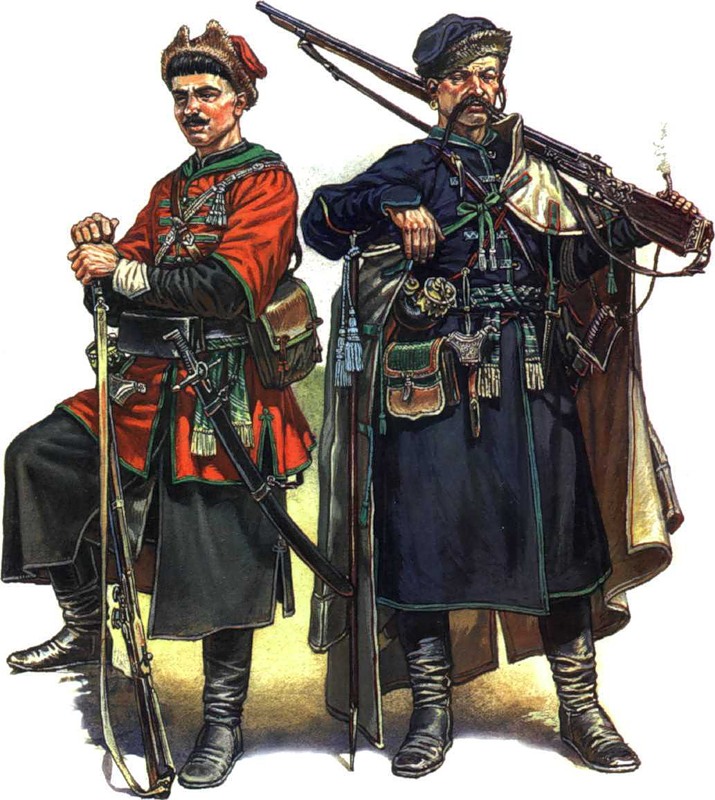
Male
In ancient sources we find the following description of clothing:
- Zipun is a collarless caftan made of brightly colored homespun cloth. In the 20th century, it was replaced by the vencerada, a long cape with a hood;
- Bloomers are a necessary part of the Cossack uniform, which were tied with a narrow belt, and a purse was sewn behind it. The absence of a belt was considered shameful. On weekdays, they wore blue pants, and on holidays and wedding days, red pants;
- There were two types of shirts: beshmet and Russian. Beshmets were wrapped tightly and reached the knees, fastened with hooks. A special feature of the beshmet was its loose sleeves. In contrast to Russian shirts, they were worn loose. Shirts were made of linen and silk. For a wedding, a man wore a beautifully embroidered shirt;
- Balakhon is a woolen cape with a hood. It is waterproof and does not crack in severe frosts, like leather items.
- Chekmen is an open outer caftan made of cloth worn by the Don Cossacks with loose sleeves;
- Kereya is an outer caftan made of cloth of the Zaporozhian Cossacks;
- Arkhaluk is a Cossack outer garment reminiscent of a quilted Tatar robe;
- Chembars are leather trousers worn for fishing;
- A knitted wool robe with a hood, pulled over a sheepskin coat in winter or in bad weather;
- In frosty weather, sheepskin coats were worn on bare skin. When the wool rubbed against the body, an electric field appeared and the person warmed up. If the person sweated, the sheepskin did not allow the clothes to absorb the sweat, saving them from icing;
- A burka is a sleeveless felt cape of white, black or brown color. It could protect in any weather. During the night it was used as a bedding and blanket. A burka placed on poles became a tent. And if thrown over the shoulders, it hid weapons and protected from the rain.
Cossacks highly valued the undershirts that their mothers or wives sewed for them. They believed that they would protect them in battle. For christenings, a special shirt was sewn by the godmother, and this shirt was kept for life. When a Cossack died, the shirt was burned. This ritual has survived to this day.
Distinctions:
- The stripe is a bright stripe on the sides of the trousers, indicating which military class the Cossack belongs to. The stripe for the Cossacks is a symbol of freedom, and is a necessary element of the Cossack uniform even in non-wartime;
- The Cossacks wore officer insignia throughout their lives;
- Earrings - indicated the place in the family. For example, if a woman had one son, he would wear an earring in the left ear, and if he was the last of the children, he would wear one in the right ear. Two earrings indicated that the parents had one child.
The stripes are a symbol of fair relations among the Cossacks. Later, they began to indicate that a person was exempt from state taxes. During the Civil War, the Cossack uniform was abolished. Due to the inconvenience during battles, the Cossacks changed their regular uniform to military uniforms: a gymnasterka, a greatcoat, and a cap. The old Cossack costume was worn only for parades.
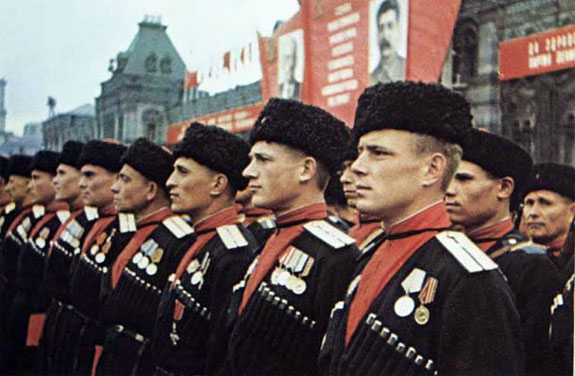
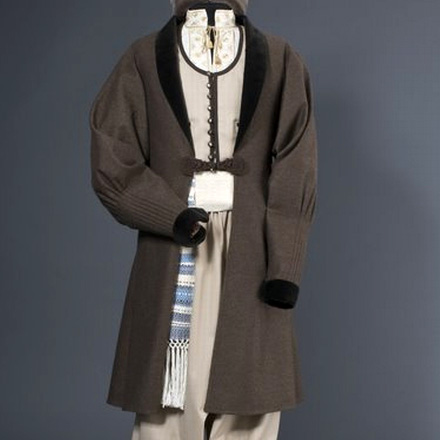
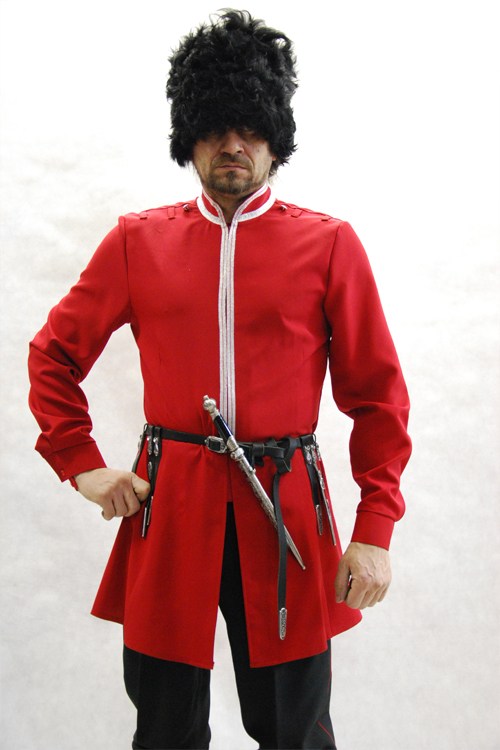
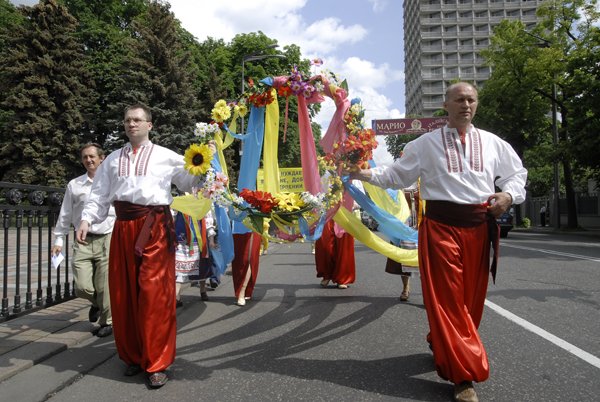
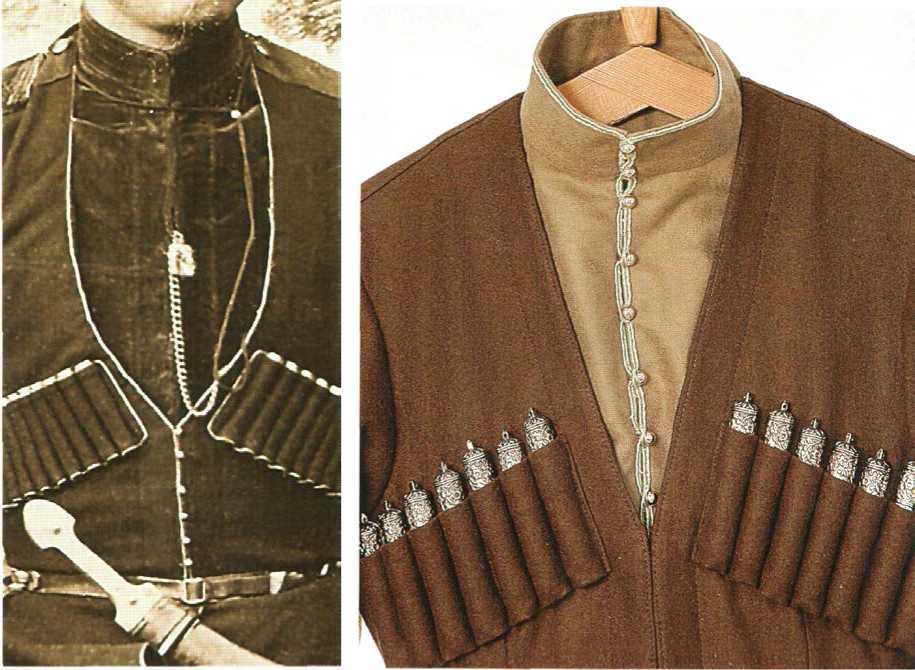
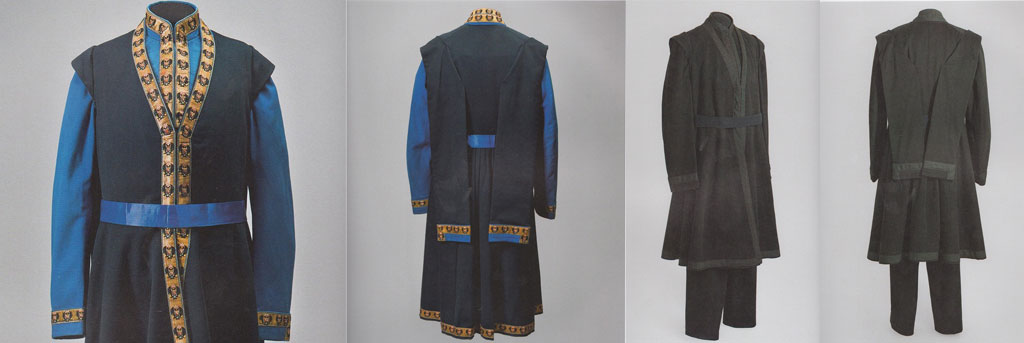
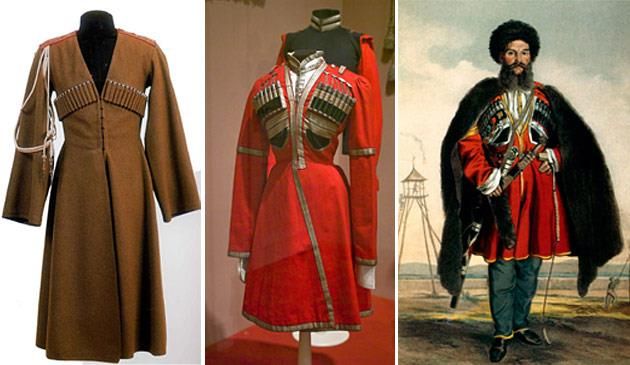
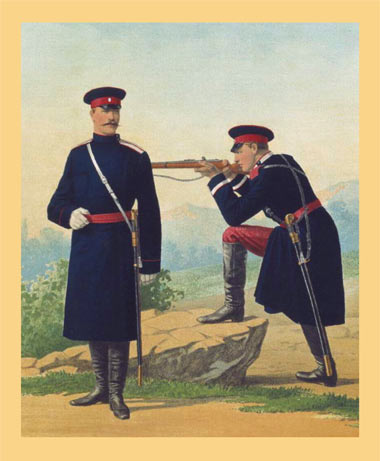
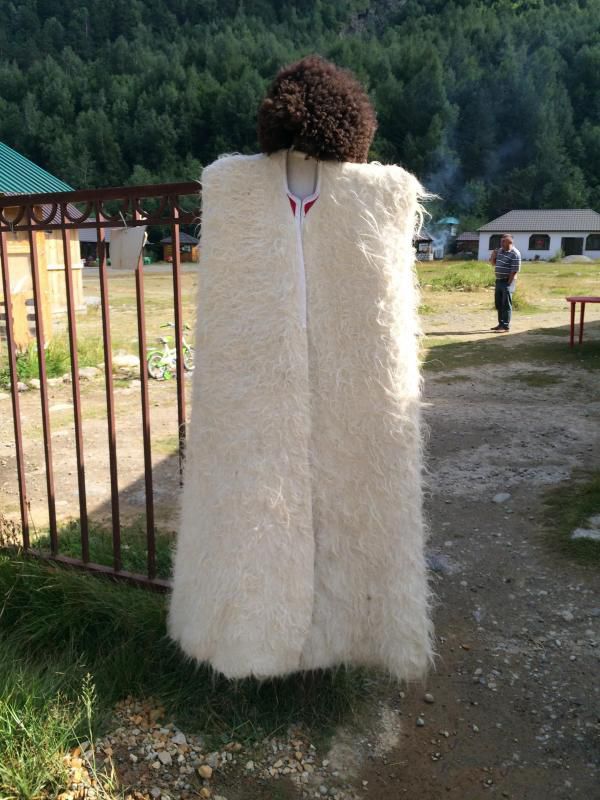
Women's
The Cossack outfit is a unique stylization of the clothing of the Turkic people. It includes:
- The shirt is the basis of women's attire. It is a long garment, almost to the heels, the bottom of which was made of coarse linen, the top - of thin;
- Kubelek is a formal dress of Cossack women on the Don with a V-shaped neckline, on which a beautiful pattern was laid out with braid;
- Women who were married wore a sukman (a type of sarafan), which was made from four pieces of fabric. It covered the upper part of the body - the chest and back. Its characteristic feature was rather short and narrow sleeves. A colored silk ribbon was sewn to the bottom of the sukman, and along the very edge it was trimmed with garuskom (a type of braid, woven with fingers in a special way);
- Kokhta is a Cossack outerwear for holidays;
- A sarafan is a dress with straps, worn with a shirt. They were made of canvas or home-made cloth, silk, brocade. They were decorated with ribbons, stripes of calico, and fringe. Don Cossack women called a bright sarafan made of calico a kumashnik;
- A zapon is a white apron. When cleaning, it prevented clothes from getting dirty, and on holidays it was an additional accessory that could diversify and decorate a costume. It was worn over a shirt or a sarafan. An everyday apron was made of canvas, and a ceremonial one was made of rich lace fabric;
- Wide or narrow trousers. They were made of cotton fabric, and the visible lower part was made of silk for beauty and economy;
- Zhupeyka is a winter outerwear of Cossacks. Worn on the Don in the 19th-20th centuries;
- A caftan is a men's style shirt. Outside the home, Cossack women wore a kavrak - a caftan that was buttoned to the waist;
- A long fox fur coat, without buttons, with oblong sleeves, covered with brocade or satin fabric;
- Bashlyk is a hood made of cloth with two long ends, worn over a hat. Women there even carried children;
- A spidnitsa is an underskirt, often decorated with embroidery. In winter, women wore quilted skirts. A wealthy Cossack woman could afford to wear several skirts at once;
- The plakhta skirt served as good protection in the cold season. Cossack women from poor families wore cambric and calico skirts.
Everyday attire included a shirt with long sleeves, a blouse, and a cotton skirt. The ceremonial costume was a shirt, a lace skirt to the heels, and a cuirass - a short women's blouse. A necessary element of traditional Cossack clothing was a lace apron with numerous frills. Clothing made of red material was considered the most beautiful.
The best quality of fabric was considered to be the outfit of girls-brides. From the age of 30, Cossack women wore darker, single-color clothes of a simple cover. Girls wore one shirt, and older ones put on a skirt on top.
At the end of the 18th and beginning of the 19th century, the main part of the outfit on the Lower Don was a bright dress - kubelok. In the 20th century, on the Don, they often began to wear an outfit of a skirt and blouse, called "Parochka". In poor families, a blouse with a skirt could also be a wedding suit.
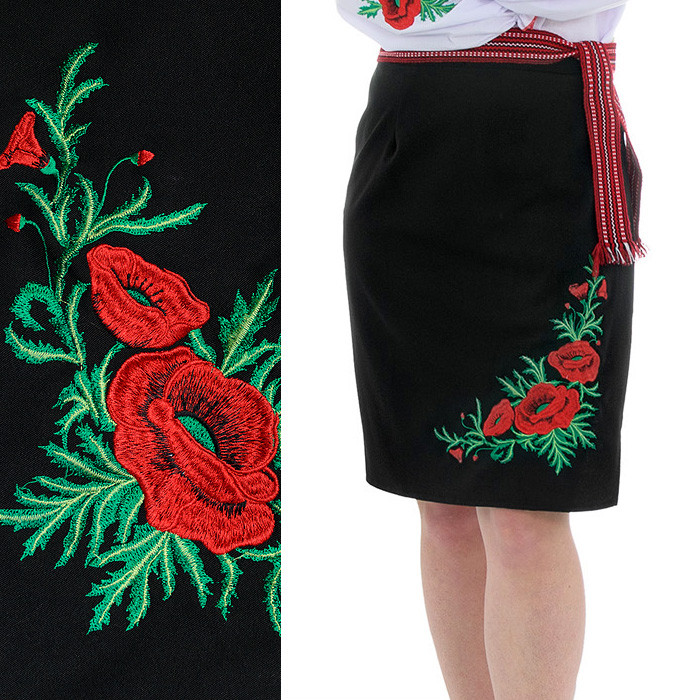
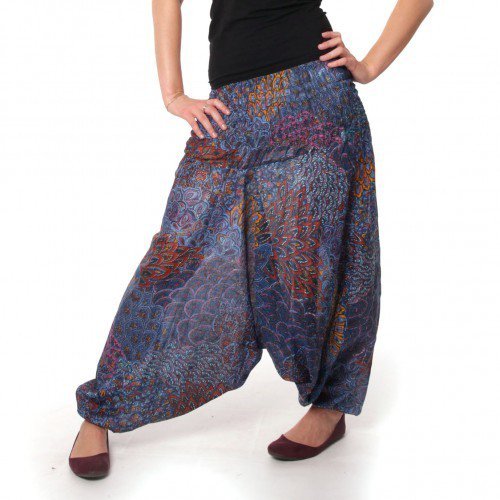
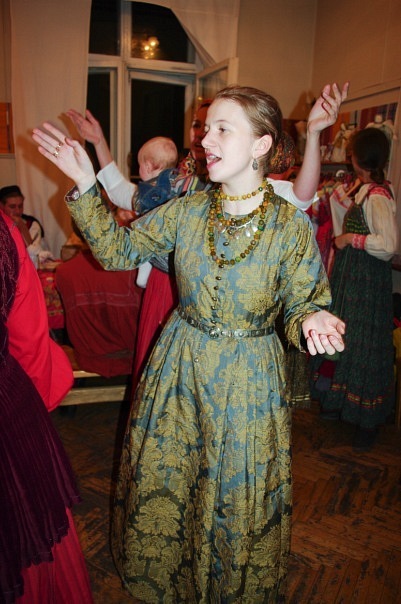
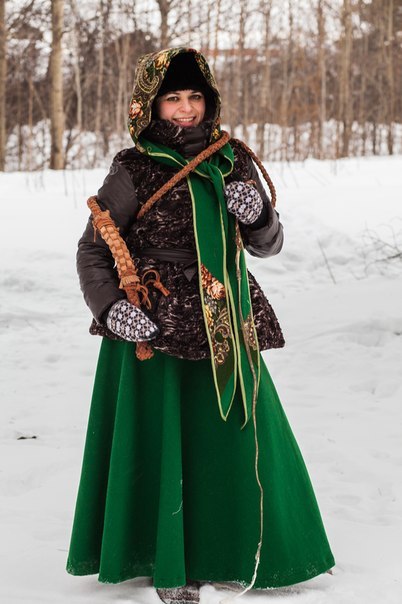
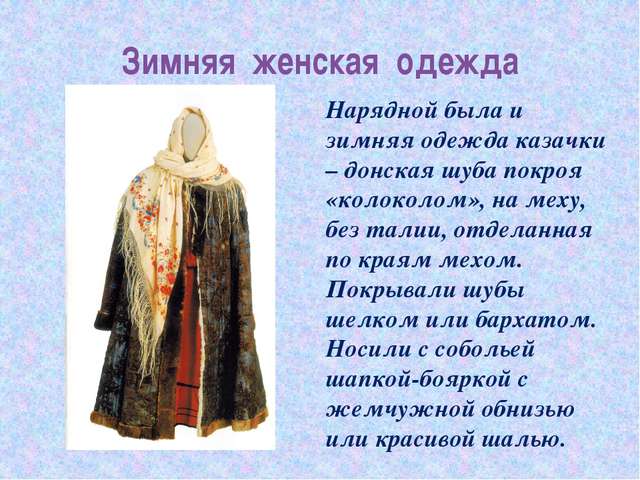
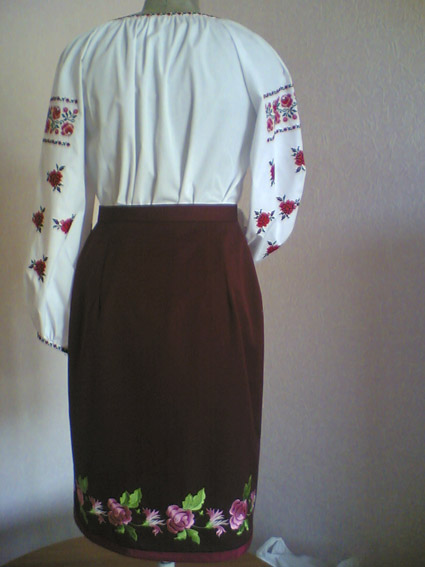
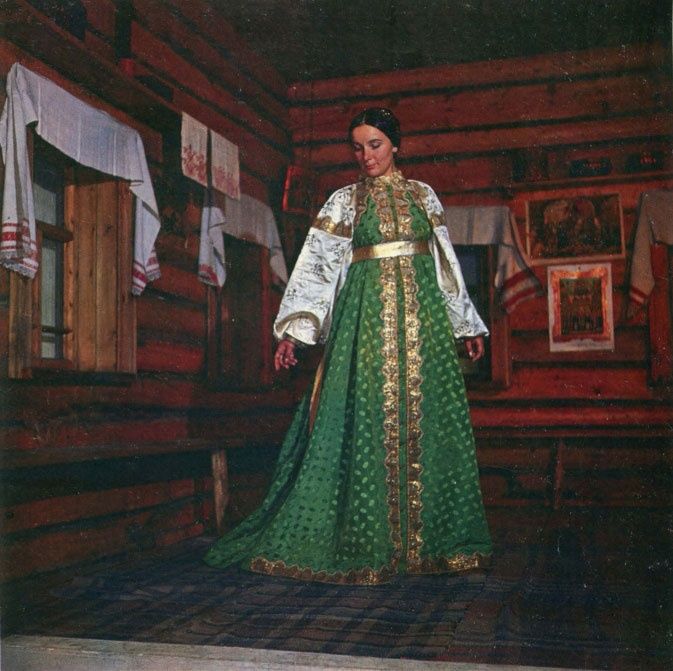




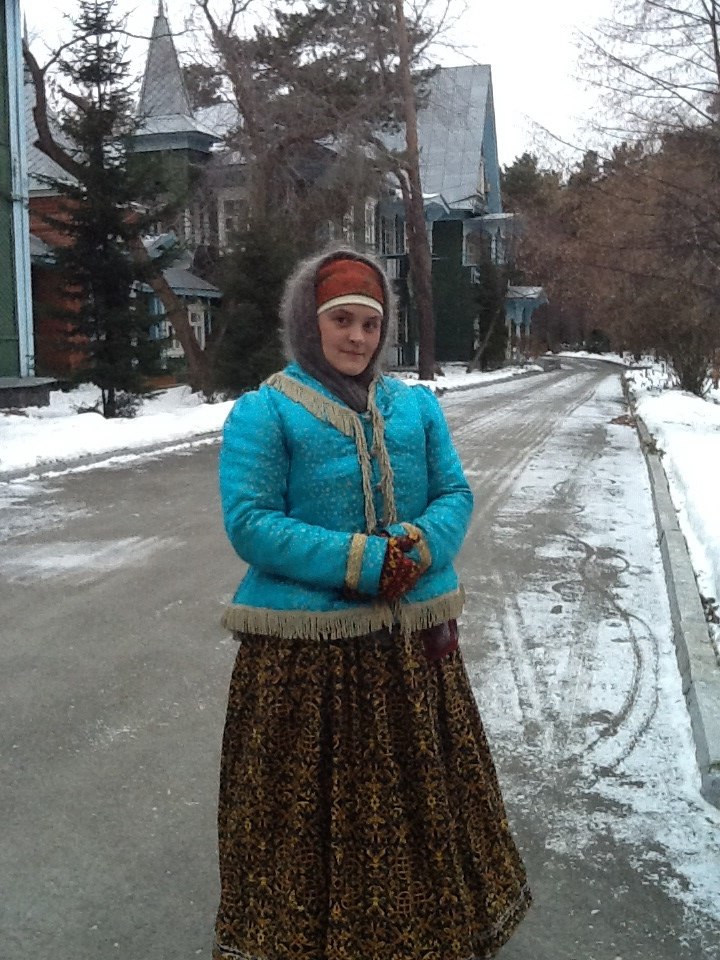
The difference between the clothing of the Kuban and Don Cossacks
Due to different places of residence, differences appeared in the costumes of the Don and Kuban Cossacks. The equipment of the Kuban Cossacks was significantly influenced by the clothing of the highlanders. The Don Cossacks most often wore chekmeni, while the Kuban Cossacks usually wore cherkeskas, which are common in the Caucasus.
The original costume of the Cossacks living on the Don included a papakha, trousers with stripes, boots, beshmets, belts and sword belts, and a woolen hood. The clothing of the Kuban Cossacks included trousers, a cherkeska, beshmet, hood, burka, papakha, and boots. A necessary element was a sabre hanging from the belt, and later a dagger.
A green tunic and blue trousers are the ammunition of the Don Army. They wore the suit all the time: both in battles and at home. The equipment of the Kuban Cossack Army included a cherkeska, beshmet, and trousers. It was also worn both in battle and in peacetime.
The Don Cossacks wore blue trousers on everyday days, and crimson ones for church or holidays. The colour was also chosen based on the person's age. The fabric and colour of the Kuban Cossacks' trousers were chosen according to their military rank and the time of year.
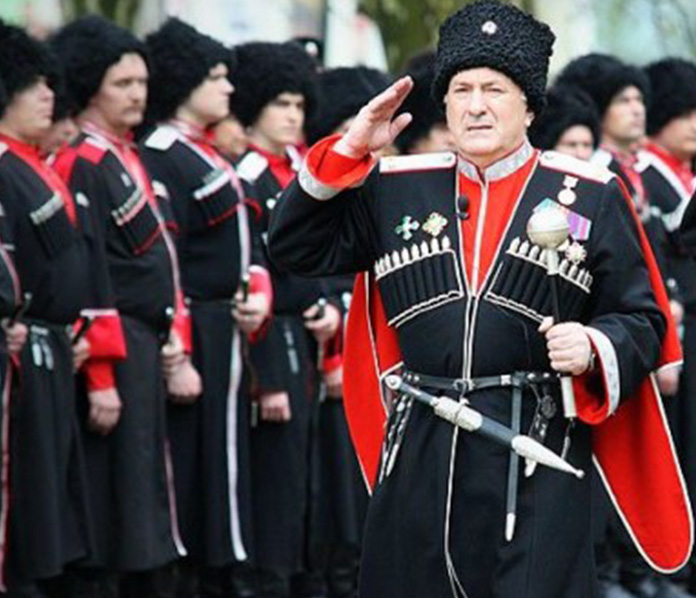

Shoes
There were many boots, as they were comfortable for riding and walking for a long time. They were usually of the Tatar type, red, green or yellow. The Cossacks especially liked soft boots with low heels or without them. Ichigi are boots with long shafts, without heels. They were sewn mainly from strong bull leather. Chiriks are leather galoshes with a hard sole, which were put on over soft ichigi. Valenki are a type of boots made of wool. They were worn by adults from wealthy families. Valenki with cut shafts were called valenki, they were worn in the hut, and high ones were worn on trips. Postals (pistons) are the simplest leather footwear. They were worn for work. Vorotyashki are light footwear made so that the fur is inside. Karpetki are slippers made of stiff threads.
Women had a variety of shoes for both everyday wear and special occasions:
- Hussariki are brightly colored ceremonial boots with heels and lacing;
- Ichigi - shoes made of red leather, decorated with a pattern;
- Chevyaki are soft open shoes without heels;
- Shoes are leather shoes with straps;
- Chedygi are pointed boots of Astrakhan style with high heels;
- Gaiters are shoes with long shafts that were fastened at the side;
- Barettes are narrow-toed low shoes with low heels.
At the beginning of the 20th century, rubber galoshes became fashionable. White yarn socks were worn underneath them. They have not gone out of use to this day.
Headwear
They are considered a special element of costumes. Many legends, traditions and signs are associated with the hat and cap. A Cossack never parted with a hat, considering it a part of himself. Icons and prayers written by children were sewn into the hat. The main quality is that the headdress was multifunctional. The fur protected the eyes from dust and wind, with its help you could quickly get into your home without covering your hair and eyes with earth. It was also used as a pillow for sleeping.
If a hat was knocked off the head, it was a challenge to fight. The cap of a killed Cossack had to be brought home and placed on a shelf near the icon. If a Cossack woman married for the second time, her new husband would put the hat of the previous owner in the water, thus promising to take care of the family.
Bashlyk is a head covering made of thin fabric. It was made in the form of a hood with long ears, which were wrapped around the neck. Initially introduced as an element of the military uniform of the Cossacks, then it became fashionable among many residents of Russia and Europe.
You could learn a lot about a Cossack by the way his bashlyk was tied: if the bashlyk was tied on his chest, it meant he had completed military service. If it was crossed on his chest, he was currently on duty, and if you could see the ends thrown behind his back, it meant the Cossack was resting.
Shirinkas are rectangular cotton headscarves worn only when fishing. Papakhas are men's headdresses made of sheepskin or astrakhan fur. An important paper containing a secret message could be placed behind the lapel of the papakhas. This was the safest place, because Cossacks never lost their papakhas. Papakhas were made in different styles: low ones with a flat top or high ones with a conical top.
Unmarried girls were allowed to go out with their heads uncovered and their hair down their backs. Tarkich is a girl's headscarf. Kazimirka is a small patterned scarf. It was tied like a bandana, covering the forehead. Faishonka is a silk scarf with lace. It had long ends that were tied in a bow. They were worn by young girls on holidays. Kokoshnik is a ceremonial headdress. Sometimes there was only one kokoshnik in a farmstead. The owners gave it to the bride for a certain price at the wedding ceremony.
A silk half-shawl was an addition to a married woman's outfit. Shlychka is a small fabric cap worn by married women, which was put on the braid and covered with a scarf at the back. Such a cap was worn in Kuban and Don. Nakolka is an oval silk headdress of married young women with a chintz lining, made on a durable cardboard base. It was decorated with ribbons, bows, and lace. In the 19th century, a headdress called a kolpak was gaining popularity in the upper reaches of the Don. This is a wedge-shaped stocking with a tassel on top. It was worn by married women over hair gathered in a knot. Kubelok went well with a povoynik. Povoynik is a bright cap under which hair was hidden. A woman was allowed to go bareheaded only in front of her husband. It could be made of brocade, silk, or cotton. Flowers or feathers were attached to the top. Women's Cossack clothing was always worn complete with a headdress. A kazimirka was thrown over the shlychka, and a shawl over the kazimirka.
Even in the modern world, a costume indicates a person's position among people. Compared to other nations, for the Cossacks, who lived in harsh conditions and were forced to wear a military uniform, small details were important: earrings in the ear, a specially tied hood. From them, as from an open book, one could learn a lot about a fellow. In order to preserve the traditional Cossack outfit for future generations, it is necessary to regularly hold a presentation of costumes.
Video

